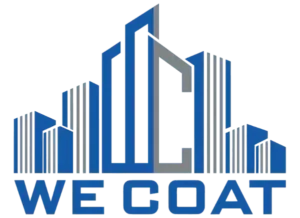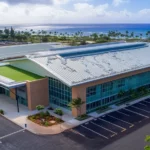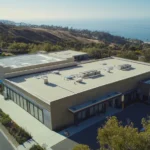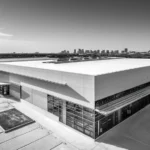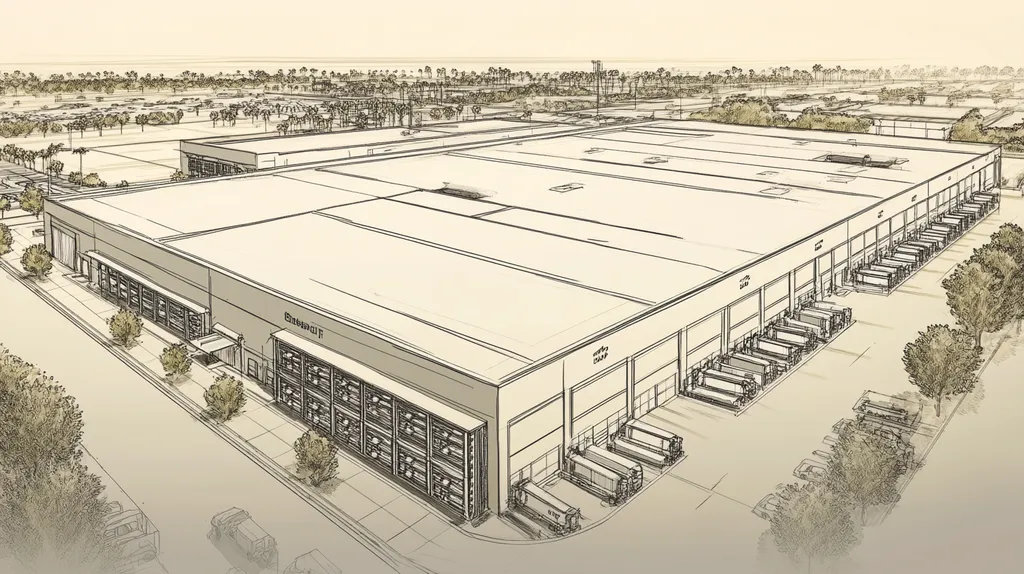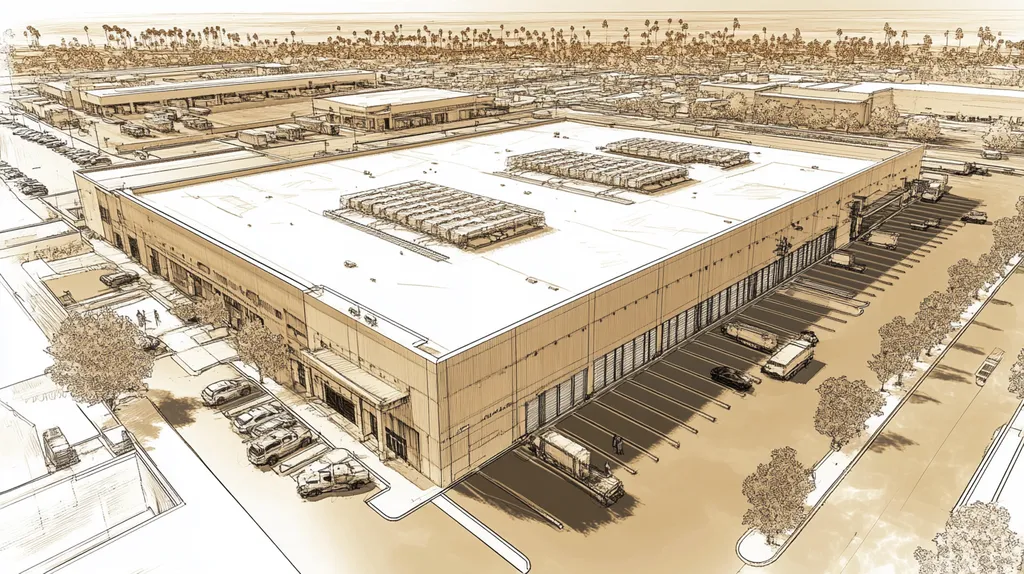Welcome to today’s Battle Royale featuring two roofing heavyweights: “Thermal Imaging” in the east corner versus “Reflective Membranes” in the west!
Tonight’s showdown pits these contenders against each other across six punishing rounds designed to test every aspect of their performance for Historic Commercial Roofing Systems.
At stake? Millions in potential costs, decades of building protection, and the critical performance demands of modern commercial and industrial facilities.
Our professional judging panel will evaluate each round on technical merit, real-world performance, and value delivery. After all six rounds, we’ll declare our ultimate champion.
Ladies and gentlemen, facility managers and building owners… it’s time to rumble!
ROUND 1: INITIAL COSTS & INSTALLATION
When it comes to upgrading historic commercial roofs, property owners face a critical choice between diagnostic tools and physical solutions. While both thermal imaging and reflective membranes promise energy efficiency gains, their initial costs and installation requirements differ dramatically. Energy-efficient commercial roofing systems can reduce operating costs, improve tenant comfort, and extend roof lifespan – but choosing the wrong approach can lead to wasted investment. (source: RoofCrafters)
Material Expenses
Thermal imaging equipment represents a significant upfront investment for roofing contractors, but minimal direct cost for building owners. Most thermal surveys cost between $0.02-0.05 per square foot, making them an attractive initial option.
Reflective membrane materials command premium prices, typically running $3-5 per square foot for commercial-grade products. However, these materials offer documented energy savings through reduced heat absorption and improved insulation performance.
While thermal imaging’s low entry cost is tempting, reflective membranes’ proven ROI through energy reduction gives them the clear “ADVANTAGE” in this category.
Installation Complexity
Thermal imaging requires specialized training but minimal physical installation. Technicians can usually complete comprehensive roof scans in a single day, with minimal disruption to building operations.
Installing reflective membranes demands extensive preparation, including careful removal of existing materials and proper surface conditioning. The process requires skilled labor and can take 1-2 weeks for an average commercial building.
The significant labor and time requirements for membrane installation versus the relative simplicity of thermal scanning results in an “ADVANTAGE” for thermal imaging.
Project Timeline
Thermal imaging delivers immediate results, allowing property owners to quickly identify problem areas and prioritize repairs. Reports are typically available within 24-48 hours of inspection.
Reflective membrane installations require careful project scheduling, weather coordination, and potential tenant notifications. Complete installation cycles often span 2-4 weeks from start to finish.
The ability to gather actionable data quickly and minimize facility disruption gives thermal imaging the clear “ADVANTAGE” in timeline efficiency.
ROUND 1 WINNER: Thermal Imaging
ROUND 2: DURABILITY & LIFESPAN
When it comes to historic commercial buildings, roofing choices can make or break long-term sustainability. A poorly chosen solution can lead to accelerated deterioration, skyrocketing energy costs, and compromised structural integrity. Property owners must weigh not just the immediate benefits but the lasting impact of their roofing investments on these irreplaceable structures.
Thermal Resistance
The battle against heat transfer remains a critical factor in preserving historic commercial roofs. Thermal imaging provides valuable insights into existing insulation performance but offers no inherent protective properties.
Cool roof coatings and reflective membranes actively combat heat absorption through their high reflective properties, significantly reducing thermal stress on roofing materials. These solutions create a protective barrier that helps maintain consistent roof temperatures throughout daily heating and cooling cycles. (source: Preferred Roofing Services)
With its active thermal protection capabilities versus passive diagnostic features, reflective membranes claim the clear “ADVANTAGE” in this category.
Weather Resistance
Thermal imaging excels at identifying moisture infiltration and potential leak points before they cause significant damage. However, it provides no direct protection against weather elements.
Reflective membranes create a continuous protective layer that shields underlying materials from UV radiation, precipitation, and temperature fluctuations. This protective barrier significantly extends the life expectancy of historic roofing systems.
The superior weather protection offered by reflective membranes earns them another clear “ADVANTAGE” in this category.
Maintenance Requirements
Regular thermal imaging scans can help facility managers spot developing issues early, potentially preventing costly repairs. However, the technology requires ongoing scanning and interpretation to maintain its effectiveness.
While reflective membranes need periodic cleaning to maintain optimal performance, they provide constant protection without active monitoring. Their simple maintenance requirements typically involve basic inspections and occasional washing to remove debris.
The lower ongoing maintenance burden and passive protection of reflective membranes secure them a third “ADVANTAGE” in this final category.
ROUND 2 WINNER: Reflective Membranes
ROUND 3: PERFORMANCE FACTORS
The stakes couldn’t be higher for historic commercial buildings facing energy efficiency challenges. Every percentage point of heat loss translates to thousands in wasted operating costs, while poor material choices can compromise irreplaceable architectural features. Property owners need solutions that deliver measurable results without compromising historical integrity.
Energy Efficiency Impact
The core challenge in historic commercial buildings is managing heat transfer while preserving architectural character. Effective solutions must demonstrate measurable improvements in energy consumption without compromising the structure’s historical significance.
Thermal imaging excels at pinpointing energy waste through detailed temperature mapping. This diagnostic approach helps facility managers target problem areas with surgical precision, eliminating guesswork in repair planning.
Reflective membranes actively combat solar heat gain through their surface properties. The color and reflectivity of these materials significantly affect their solar reflectance and absorption properties, creating an active barrier against heat transfer. (source: Appalachian Forest National Heritage Area)
With its direct impact on energy consumption versus diagnostic capabilities, reflective membranes claim the “ADVANTAGE” in efficiency impact.
Performance Verification
Measuring success in energy-efficient roofing requires clear performance metrics. The ability to verify and quantify improvements directly affects ROI calculations and future planning decisions.
Thermal imaging provides immediate, visual confirmation of heat loss patterns. These detailed scans create baseline measurements for tracking improvements and validating repair effectiveness.
Reflective membrane performance can be measured through reduced cooling costs and lower peak roof temperatures. However, isolating these benefits from other building factors presents challenges in verification.
The superior measurement capabilities and detailed documentation potential gives thermal imaging the “ADVANTAGE” in verification.
System Integration
Energy-efficient roofing solutions must work harmoniously with existing building systems. Poor integration can negate potential benefits and create new problems in historic structures.
Thermal imaging seamlessly complements existing maintenance programs without requiring physical modifications. Its non-invasive nature preserves historical integrity while providing valuable system insights.
Reflective membranes require careful consideration of existing ventilation and moisture management systems. While effective, their installation may necessitate adjustments to other building components.
The minimal disruption and universal compatibility of thermal imaging secures the “ADVANTAGE” in system integration.
ROUND 3 WINNER: Thermal Imaging
ROUND 4: MAINTENANCE REQUIREMENTS
In the high-stakes world of historic commercial roofing, maintenance missteps can torpedo even the most sophisticated energy efficiency solutions. While vendors pitch set-it-and-forget-it technologies, the reality is that proper upkeep determines whether these investments deliver lasting returns or become expensive disappointments. Understanding the true maintenance demands of each option can mean the difference between sustainable success and costly failure.
Regular Inspection Requirements
Thermal imaging systems demand specialized expertise for effective operation. Technicians must be properly trained in equipment calibration, data interpretation, and identifying false readings that could lead to misdiagnosis.
These inspections typically require quarterly or bi-annual scheduling to maintain consistent monitoring. Each scan must be performed under specific environmental conditions to ensure accurate results, adding complexity to maintenance planning.
Reflective membranes need only basic visual inspections by maintenance staff on a semi-annual basis. These straightforward checks focus on surface cleanliness, seam integrity, and potential physical damage.
The simplicity and reduced frequency of reflective membrane inspections earn them the clear “ADVANTAGE” in this category.
Cleaning and Surface Maintenance
Thermal imaging equipment requires minimal physical maintenance beyond basic lens cleaning and battery management. The technology itself remains largely hands-off between scheduled inspection periods.
Reflective membranes need regular cleaning to maintain their energy-efficient properties. Dirt, debris, and atmospheric pollutants can significantly reduce their reflective capabilities, requiring periodic washing and surface treatment.
Despite the cleaning requirements, reflective membranes offer more predictable maintenance scheduling and simpler execution, giving them another “ADVANTAGE” in this category.
Long-term Performance Maintenance
Thermal imaging technology can identify developing issues before they become major problems, potentially reducing long-term maintenance costs. However, this preventive capability depends entirely on regular use and proper interpretation.
Reflective membranes maintain their performance through simple, consistent care routines. The color and reflectivity of these surfaces directly impact their solar reflectance properties, making routine maintenance crucial for sustained energy efficiency. (source: Appalachian Forest National Heritage Area)
With more predictable maintenance requirements and direct performance benefits, reflective membranes secure a third “ADVANTAGE” in this category.
ROUND 4 WINNER: Reflective Membranes
ROUND 5: SUSTAINABILITY CREDENTIALS
In today’s commercial roofing sector, sustainability isn’t just about meeting code requirements – it’s about protecting both building assets and environmental resources. Historic structures present unique challenges, where preserving architectural integrity must balance with modern energy efficiency demands. Property owners face mounting pressure to adopt solutions that deliver measurable environmental benefits while maintaining the character of irreplaceable buildings.
Environmental Impact Assessment
Thermal imaging technology represents a low-impact diagnostic approach that consumes minimal resources. The equipment requires only electricity to operate and generates no waste products during normal use.
However, the technology itself offers no direct environmental benefits beyond its diagnostic capabilities. Any positive impact depends entirely on how property owners act on the information revealed through scanning.
Reflective membranes actively reduce building energy consumption through their physical properties. Their direct contribution to lowering cooling loads and extending roof lifespans creates measurable environmental benefits.
The clear positive environmental impact of reflective membranes versus the indirect benefits of thermal imaging gives reflective membranes the “ADVANTAGE” in this category.
Resource Conservation
Thermal imaging helps preserve existing roofing materials by identifying problems before they require extensive replacement. This targeted approach reduces unnecessary material waste and preserves embodied energy in existing structures.
The color and reflectivity of reflective membrane surfaces significantly affect their solar reflectance and absorption properties, creating an active barrier that reduces resource consumption through lower cooling demands. (source: Appalachian Forest National Heritage Area)
Both options demonstrate strong resource conservation benefits, though through different mechanisms. This results in a “TIE” for resource conservation impact.
Long-term Environmental Benefits
Thermal imaging provides ongoing diagnostic capabilities that help maintain optimal system performance. Regular monitoring ensures energy efficiency measures continue delivering intended benefits throughout their lifecycle.
Reflective membranes deliver consistent environmental benefits through reduced energy consumption and extended roof lifespans. Their performance remains relatively stable with basic maintenance, requiring minimal additional resources over time.
The predictable, passive benefits of reflective membranes versus the dependent nature of thermal imaging diagnostics gives reflective membranes the “ADVANTAGE” in long-term impact.
ROUND 5 WINNER: Reflective Membranes
ROUND 6: SPECIALIZED APPLICATIONS
In the high-stakes world of historic commercial roofing, specialized applications can make or break energy efficiency investments. Every year, property owners waste millions on mismatched solutions that ignore the unique demands of heritage structures. Understanding how different technologies perform in specialized scenarios isn’t just about energy savings – it’s about preserving irreplaceable architectural assets while meeting modern efficiency standards.
Heritage Structure Applications
Historic buildings present unique challenges where standard energy-efficient solutions often fall short. These structures require specialized approaches that balance preservation requirements with modern performance demands.
Thermal imaging excels in heritage applications by providing non-invasive diagnostics that respect historical integrity. The technology can map heat patterns and identify efficiency issues without physical modification to protected structures.
Reflective membranes face significant hurdles in heritage applications due to strict preservation guidelines. Many historic preservation boards resist visible modifications to original roofing materials, limiting installation options.
The non-invasive nature and preservation-friendly approach of thermal imaging secures the clear “ADVANTAGE” in heritage applications.
Climate-Specific Performance
Regional climate variations dramatically impact roofing system effectiveness. Solutions that excel in one climate zone may underperform or even cause damage in others.
Thermal imaging maintains consistent diagnostic capabilities across all climate zones. However, extreme temperatures and humidity can affect reading accuracy, requiring careful timing of inspections.
Reflective membranes show superior performance in hot climates but offer limited benefits in cooler regions. Their effectiveness varies significantly based on solar exposure and seasonal temperature swings.
The universal applicability of thermal imaging across climate zones earns it another “ADVANTAGE” in this category.
Architectural Integration
Complex roof geometries and unique architectural features demand specialized solutions that work within existing constraints. The wrong approach can compromise both aesthetics and performance.
Thermal imaging adapts seamlessly to any roof configuration, providing valuable data without physical modification. Its flexibility makes it ideal for buildings with multiple roof types or unusual features.
Reflective membranes often struggle with complex geometries and architectural details. Installation around dormers, chimneys, and decorative elements can create vulnerable points in the system.
The superior adaptability and non-invasive nature of thermal imaging secures a third “ADVANTAGE” in architectural integration.
ROUND 6 WINNER: Thermal Imaging
AND THE WINNER IS…
After six punishing rounds of technical evaluation, with both contenders trading decisive blows, we have our verdict…
In a split decision, with a final score of 3 rounds to 3, we declare this epic battle a DRAW!
Thermal Imaging dominated the early rounds with its non-invasive diagnostics, quick deployment, and specialized application capabilities. Its championship-caliber performance in heritage structures and complex architectural scenarios proves why it remains an undisputed leader in roof assessment technology.
Reflective Membranes fought back hard, landing knockout punches in durability, maintenance, and sustainability. Its active energy-saving properties and straightforward upkeep requirements demonstrate why it’s a heavyweight contender in the energy-efficiency arena.
But wait! Before you rush to place your bet on either fighter, remember that every building brings its own unique challenges to the ring. Local climate conditions, preservation requirements, and specific property characteristics can dramatically impact performance outcomes. While this analysis provides general guidance, it cannot account for all variables in your corner.
Professional consultation with qualified roofing experts remains essential for evaluating your specific situation and developing a winning strategy.
In the high-stakes world of historic commercial roofing, true victory comes not from blindly backing either contender, but from strategically matching your building’s specific needs with the right combination of diagnostic insight and active protection.
Let’s get ready to make some smart roofing decisions!
FREQUENTLY ASKED QUESTIONS
Q. What are the costs for commercial roof upgrades?
A. Upgrading a commercial roof can vary greatly in cost. Thermal imaging usually costs less initially, while reflective membranes require a higher investment due to materials. However, the long-term energy savings from reflective membranes often prove worth the upfront costs.
Q. How durable are reflective membranes on industrial roofs?
A. Reflective membranes are known for their durability and long lifespan. They provide excellent protection against weather elements, helping to extend the life of the roof significantly. Regular maintenance ensures that they remain effective and continue to perform well over time.
Q. How does thermal imaging improve commercial roof efficiency?
A. Thermal imaging identifies energy inefficiencies by showing heat loss in real-time. This technology allows property managers to pinpoint problem areas for repairs, thus enhancing overall energy efficiency without invasive modifications to the historic structure.
Q. What maintenance do industrial roofs with reflective membranes require?
A. Reflective membranes require basic maintenance, including visual inspections and periodical cleaning. Keeping the surface free of dirt and debris is crucial for maintaining their reflective properties. This maintenance is generally straightforward and can be handled by standard facility staff.
Q. How do sustainable practices impact commercial roofing choices?
A. Sustainability is increasingly influencing roofing decisions, especially for historic structures. Solutions like reflective membranes can offer measurable environmental benefits by reducing energy consumption. Owners are now more focused on achieving long-term sustainability while preserving architectural integrity.
Q. Can thermal imaging work for any type of commercial roof?
A. Yes, thermal imaging is versatile and can be utilized on various commercial roof types. Its non-invasive nature ensures that it can adapt to any roofing scenario without compromising the structure’s integrity, making it ideal for historic and modern buildings alike.
Q. What’s the long-term benefit of using reflective membranes?
A. Reflective membranes help reduce energy costs significantly over time. Their ability to reflect sunlight results in lower cooling demands, which translates to reduced energy consumption. With regular maintenance, these membranes can extend the roof’s lifespan and enhance overall building efficiency.
